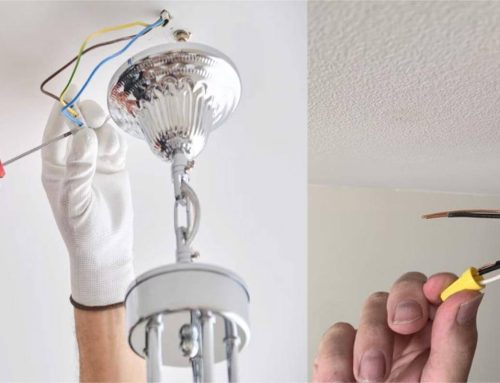If you need to install a chandelier soon, perform a load test on the chandelier before doing so. Because chandeliers come in large and small sizes, you have to make sure that your ceiling can support the fixture. Next, we will introduce the load test of chandeliers in detail.
1. What is Chandelier load testing?
Load testing of a chandelier is an extremely important part of the chandelier installation process to ensure that the structure and fixtures used to hang the chandelier (chandelier chains and other components) are up to the task and capable of supporting its weight. Load testing also determines The safe installation of wiring and electrical components is very important to the safety of your home and ceiling structure.

(Another related post: Chandelier 101: All You Need to Know)
2. What is the process for chandelier load testing?
If you are planning to load-test the chandelier you purchased for your home, it is important to understand how it works so you can be prepared accordingly. Here are the basic steps for load testing:
1) Step 1
Check the chandelier’s mounting location to make sure it is strong enough to support the weight of your chandelier and its components.
To do this, you need to hang about the same weight as a chandelier, or even more, from the components. For lighter chandeliers, the test hanging time will take at least a few hours, while for heavier chandeliers, you will need a longer test time. Generally speaking, the heavier the chandelier, the longer the hanging time will need to be.
2) Step 2
If the location is not strong enough, your inspector may take additional steps to strengthen the area where you want to hang the chandelier. For example: maybe adding something like steel plates or beams to the ceiling.
3) Step 3
Once you have the components in place and are ready to hang your chandelier, you should perform a weight load test again. This step is to ensure that the light fixtures are installed correctly before hanging them. It is important to note that you want to make sure that the points you install do not have any deviation.
In addition to this, you must also check the electrical wiring system in your home to ensure that the wiring is safe when installing chandeliers.
4) Step 4
Your inspector may also examine your chandelier (especially a particularly large one) and its components (including any decorative effects such as straps, mirrors, crystal, or glass.) to estimate the strength required for the hanging.
5) Step 5
As long as it is finalized that the placement of the chandelier in your home is okay, your inspector will provide you with a certificate documenting the safety of the location that was inspected.
6) Step 6
Once the chandelier is hung, you’ll need to check the accessories regularly. We recommend that you carry out an annual load test to ensure the structural safety of your ceilings and fixtures.
Tip: To ensure that the fixed point does not shift, you can mark it with a marker before the load test procedure. This will ensure the accuracy of the test.

(Another related post: How to Select the Right Size Room Chandelier?)
3. What are the benefits of chandelier load testing?
Load testing of chandeliers can help ensure the safe performance and reliability of the fixture and its associated equipment. Conducting load testing has the following benefits:
1) Safety Assessment
Load testing can reduce fire and other safety risks by ensuring that the chandelier and its associated electrical equipment will not be overloaded or overheated under normal use conditions.
2) Product reliability verification
Through load testing, the stability and reliability of the chandelier under long-term operation and high load conditions can be verified to avoid equipment damage or failure caused by excessive load.
3) Compliance checks
Load testing helps ensure that chandeliers comply with relevant safety standards and regulatory requirements to meet market access and product certification requirements.
4) User experience optimization
Through load testing, it can be ensured that the chandelier can provide stable and long-lasting lighting effects under normal use, improving the overall user experience.
Therefore, it is very important to load-test the chandelier to help ensure the safety, reliability, and compliance of the product while improving the user experience.

(Another related post: How to Install a Chandelier?)
4. How often do you need to perform chandelier load testing?
As with all equipment, the frequency of load testing of a chandelier will depend on a variety of factors, such as the type of chandelier, material, installation environment, and local regulations or recommendations. Generally speaking, chandelier fixtures should be load tested during installation to ensure they can safely support the weight of the chandelier.
But it doesn’t mean that you don’t have to worry about it after installation. Regular inspection is still very important. This is still important to identify signs of wear, damage, or weakening that may occur over time. However, the intervals between load tests and periodic checks may vary, here are some scenarios to consider:
1) New installations
For chandeliers that have just been installed in your home, we recommend that a load test be performed immediately after installation to ensure that your fixtures can withstand the weight of the specific chandelier being used.
2) Periodic inspections
After the initial load test, we recommend maintaining regular inspections, usually once every 1 year is sufficient. But if your chandelier is located in an area with very high traffic, then the chandelier will be more susceptible to vibration or environmental factors. Whether it is for safety reasons or the life of the chandelier, this type of chandelier requires more frequent inspections. , to avoid accidents.
3) High-use areas
If the chandelier is located in an area with high humidity, large temperature swings, or potential exposure to corrosive elements, we recommend more frequent inspections (every 6 months).
4) High ceiling installation
Another situation is that chandeliers fixed in high positions also require frequent inspections because once problems occur with such chandeliers, they will be very dangerous.
5) Manufacturer Recommendations
The chandelier manufacturer or fixture manufacturer may provide specific guidance regarding inspection and load testing intervals. Follow their recommendations to ensure the best results.
6) Local Codes
Some areas may have specific codes or standards that require load testing and inspection of chandelier fixtures. Be sure to comply with local regulations.

(Another related post: How to Clean a Chandelier?)
5. Conclusion
The above is all the introduction about the load test of chandeliers. If you have any questions, you are always welcome to contact us. We are Postmodernlighting, a company specializing in the production of chandeliers, and committed to providing the best service to customers. Finally, thank you for reading.





Leave A Comment